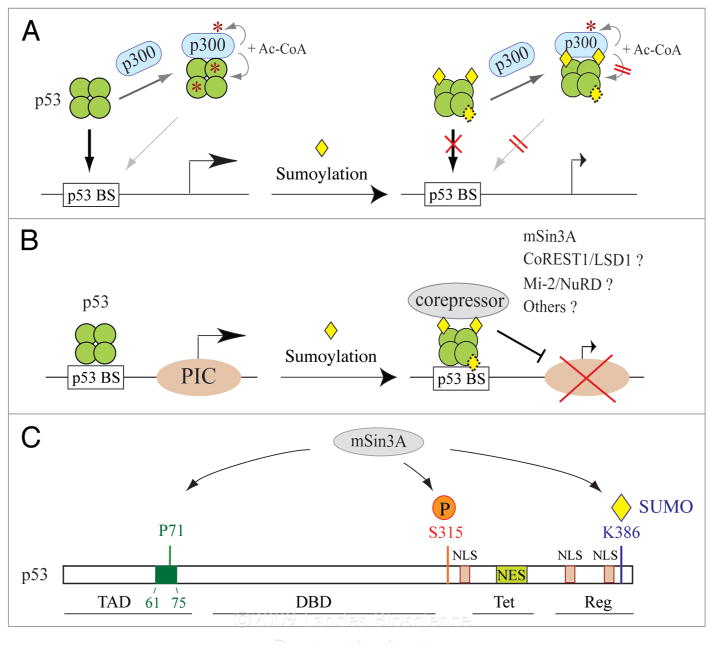Figure 3.
Effect of sumoylation on p53 binding to DNA and interaction with p300 and mSin3A. (A) Model for SUMO-inhibited DNA binding by the free form of p53 tetramers. (B) Model for SUMO-dependent recruitment of transcriptional corepressors by DNA-bound p53. (C) Association of mSin3A with p53 depends on multiple types of interactions with different regions of p53 and also on phosphorylation of serine 315 (S315) and sumoylation at K386. Abbreviations used for distinct p53 domains are: TAD, transactivation domain (aa 1–92); DBD, DNA-binding domain (aa 102–292); Tet, tetramerization domain (aa 326–356); Reg, regulatory domain (aa 363–393); NES, nuclear expert signal (aa 340–351); NLS, nuclear localization signal (aa 316–325, aa 369–375 and aa 379–384). The green box indicates a proline-rich region (aa 61–75), previously shown to bind mSin3A.65

